Introduction: The Energy Transition at a Critical Juncture
The global energy landscape stands at a pivotal moment in human history. As climate change accelerates and energy demand continues to surge, the world faces an unprecedented challenge: how to power modern civilization while simultaneously reducing carbon emissions and ensuring energy security for billions of people. The transition from fossil fuel dependence to a balanced, sustainable energy future is not merely an environmental imperative but an economic and geopolitical necessity that will reshape the 21st century.
Today’s energy systems are more complex than ever before. We are witnessing the simultaneous evolution of multiple energy technologies, from renewable sources like solar and wind to advanced nuclear designs, hydrogen fuel systems, and sophisticated energy storage solutions. The key to our energy future lies not in choosing a single “winner” among these technologies, but in creating a balanced, diverse energy portfolio that leverages the strengths of each while mitigating their individual weaknesses.
The Current Energy Landscape: A World in Transition
Fossil Fuels: The Persistent Foundation
Despite decades of environmental advocacy and renewable energy development, fossil fuels still account for approximately 82% of global primary energy consumption. Coal, oil, and natural gas continue to power the majority of electricity generation, transportation, and industrial processes worldwide. This persistent dependence is not simply a matter of inertia or political resistance, but reflects the genuine advantages these energy sources offer in terms of energy density, reliability, and existing infrastructure.
However, the environmental costs of fossil fuel combustion have become impossible to ignore. Carbon dioxide emissions from burning fossil fuels are the primary driver of anthropogenic climate change, contributing to rising global temperatures, extreme weather events, and ecosystem disruption. The social and health costs are equally significant, with air pollution from fossil fuel combustion causing millions of premature deaths annually.
The transition away from fossil fuels is further complicated by economic considerations. Trillions of dollars in existing infrastructure, millions of jobs, and entire regional economies depend on fossil fuel extraction and use. Any responsible energy transition must address these economic realities while maintaining energy security and affordability.
The Renewable Revolution: Solar and Wind Lead the Charge
The past two decades have witnessed a remarkable transformation in renewable energy economics and deployment. Solar photovoltaic (PV) costs have plummeted by over 90% since 2010, while wind energy costs have fallen by approximately 70% over the same period. These dramatic cost reductions have made renewable energy the cheapest source of new electricity generation in most parts of the world.
Solar energy has emerged as the fastest-growing energy technology in history. Modern solar panels convert sunlight into electricity with efficiencies exceeding 22% for commercial panels and approaching 50% for experimental multi-junction cells. The scalability of solar technology is remarkable, from small rooftop installations powering individual homes to massive solar farms generating hundreds of megawatts. Innovations like bifacial panels, which capture light from both sides, and floating solar installations on reservoirs and lakes are expanding the potential deployment areas.
Wind energy has similarly matured into a major power source. Modern wind turbines stand as tall as skyscrapers, with rotor diameters exceeding 220 meters and individual turbines capable of generating 15 megawatts or more. Offshore wind, in particular, has enormous potential, with stronger and more consistent winds available over ocean waters. Floating offshore wind technology is opening up deep-water locations previously unsuitable for fixed-bottom installations.
Yet renewable energy faces inherent challenges that cannot be solved by cost reductions alone. Solar and wind are intermittent sources, generating power only when the sun shines and the wind blows. This variability creates significant challenges for grid stability and reliability, particularly as renewable penetration increases. A balanced energy future must address these intermittency issues through storage, grid modernization, and complementary dispatchable power sources.
Advanced Nuclear Energy: The Sleeping Giant Awakens
Nuclear power represents one of the most misunderstood and contentious energy technologies. Despite providing approximately 10% of global electricity generation and being responsible for the second-largest share of low-carbon electricity after hydropower, nuclear energy has faced decades of public skepticism, political opposition, and regulatory challenges.
The Promise of Traditional Nuclear Power
Conventional nuclear power plants offer several compelling advantages. They provide reliable, baseload electricity generation with zero direct carbon emissions. A single large nuclear plant can generate 1,000 megawatts or more continuously for 18-24 months between refueling, occupying a relatively small physical footprint. The energy density of nuclear fuel is extraordinary: one kilogram of uranium contains approximately two million times more energy than one kilogram of coal.
Modern nuclear plants achieve capacity factors above 90%, meaning they generate electricity more than 90% of the time, far exceeding the typical capacity factors of wind (35-45%) or solar (20-30%). This reliability makes nuclear power an excellent complement to variable renewable energy sources in a balanced energy portfolio.
Small Modular Reactors: Rethinking Nuclear Scale
Small Modular Reactors (SMRs) represent a paradigm shift in nuclear technology. Unlike traditional large nuclear plants that require custom design and multi-billion-dollar investments, SMRs are factory-manufactured units with power outputs typically between 50 and 300 megawatts. Their modular nature allows for standardized design, reduced construction time, lower capital costs, and incremental capacity additions.
SMRs offer enhanced safety features through passive cooling systems that function without electrical power or human intervention. Their smaller size also makes them suitable for locations that cannot accommodate large plants, including remote communities, industrial facilities, and sites replacing retired coal plants. The ability to co-locate SMRs with industrial processes could enable decarbonization of hard-to-electrify sectors like steel and chemical production.
Next-Generation Nuclear: Fusion and Advanced Fission
Advanced reactor designs promise to address many traditional concerns about nuclear energy. Fourth-generation fission reactors include designs that can utilize nuclear waste as fuel, potentially solving the long-term waste storage challenge while extracting additional energy from spent fuel. Molten salt reactors, high-temperature gas reactors, and fast breeder reactors each offer unique advantages in safety, efficiency, and waste reduction.
Nuclear fusion, the process that powers the sun, represents the ultimate nuclear energy goal. Fusion reactions produce no long-lived radioactive waste and cannot undergo meltdown. Recent breakthroughs, including the achievement of net energy gain at the National Ignition Facility in 2022, have renewed optimism about fusion’s commercial viability. However, practical fusion power plants remain decades away from deployment, and the technology requires continued substantial investment and patience.
Energy Storage: The Missing Link
Energy storage technology is the critical enabler of a renewable-dominated energy future. Without cost-effective, large-scale storage, the intermittency of solar and wind power limits their potential contribution to grid stability and reliability.
Battery Technology: Beyond Lithium-Ion
Lithium-ion batteries have dominated energy storage applications over the past decade, driven by cost reductions from electric vehicle manufacturing scale-up. Battery costs have fallen by approximately 90% since 2010, making grid-scale battery storage economically viable for many applications. Large battery installations can now provide frequency regulation, peak shaving, and multi-hour energy storage to support renewable energy integration.
However, lithium-ion technology faces limitations including fire risk, limited discharge duration (typically 2-4 hours), resource constraints for lithium and cobalt, and performance degradation over time. These limitations are driving development of alternative battery chemistries including sodium-ion, iron-air, and solid-state batteries, each offering potential advantages in cost, safety, or performance.
Long-Duration Storage: Thinking Beyond Batteries
Achieving a fully renewable energy system requires storage capabilities extending well beyond the few hours provided by current batteries. Long-duration energy storage (LDES) technologies aim to store energy for days, weeks, or even seasons, addressing extended periods of low renewable generation.
Pumped hydroelectric storage remains the most mature long-duration storage technology, accounting for over 90% of grid-scale energy storage worldwide. These systems pump water uphill during periods of excess electricity and generate power by releasing water through turbines when needed. However, pumped hydro requires specific topography and faces environmental concerns about dam construction.
Emerging LDES technologies include compressed air energy storage, which stores energy by compressing air in underground caverns; flow batteries using liquid electrolytes that can be scaled independently for power and energy capacity; and hydrogen storage, where excess renewable electricity produces hydrogen through electrolysis for later use in fuel cells or combustion.
Thermal energy storage represents another promising approach, storing energy as heat in materials like molten salt, which can later generate electricity through conventional steam turbines. This approach is particularly compatible with concentrated solar power plants.
Hydrogen: The Versatile Energy Carrier
Hydrogen has emerged as a potential cornerstone of the future energy system, offering solutions for sectors that are difficult to electrify directly. As the lightest and most abundant element in the universe, hydrogen produces only water when combusted or used in fuel cells, making it an attractive zero-emission energy carrier.
The Color Spectrum of Hydrogen
The hydrogen economy involves multiple production pathways, each with different environmental implications. Gray hydrogen, produced from natural gas through steam methane reformation, currently accounts for the vast majority of hydrogen production but releases significant carbon dioxide. Blue hydrogen adds carbon capture and storage to gray hydrogen production, reducing but not eliminating emissions.
Green hydrogen, produced through electrolysis powered by renewable electricity, represents the ultimate sustainable hydrogen pathway. As renewable electricity costs continue to fall and electrolyzer technology improves, green hydrogen is approaching cost competitiveness with fossil-fuel-derived hydrogen in some regions. Pink hydrogen, produced using nuclear power, offers another low-carbon pathway.
Applications Across Sectors
Hydrogen’s versatility makes it valuable across multiple sectors. In transportation, hydrogen fuel cell vehicles offer fast refueling and long range, particularly advantageous for heavy-duty trucks, ships, and potentially aircraft. In industry, hydrogen can replace fossil fuels in high-temperature processes like steel production and cement manufacturing. For power generation, hydrogen can be burned in gas turbines or used in fuel cells to provide dispatchable electricity complementing variable renewables.
Hydrogen also serves as a chemical feedstock for fertilizer production, refining, and chemical manufacturing. The challenge lies in building the infrastructure for hydrogen production, storage, distribution, and end-use, requiring substantial investment and coordination across industries and governments.
Grid Modernization: The Smart Energy Backbone
The electricity grid, often called the largest machine ever built, requires fundamental transformation to accommodate the diverse, distributed, and dynamic energy sources of the future. The traditional one-way flow of electricity from large centralized power plants to passive consumers is giving way to a complex, bidirectional system with millions of distributed energy resources.
Smart Grid Technologies
Smart grids employ digital technology, sensors, and advanced analytics to optimize electricity generation, transmission, and consumption in real-time. Smart meters provide granular data on energy usage, enabling time-of-use pricing and demand response programs. Advanced sensors and automation systems can detect and respond to grid disturbances faster than human operators, improving reliability and reducing outage duration.
Grid-scale energy management systems use artificial intelligence and machine learning to forecast renewable energy generation, predict demand, and optimize the dispatch of various energy resources. These systems can coordinate thousands of distributed energy resources, from rooftop solar to electric vehicle charging to home batteries, creating virtual power plants that can provide grid services.
Transmission and Distribution Challenges
Integrating large amounts of renewable energy requires substantial transmission infrastructure investment. Solar and wind resources are often located far from population centers, necessitating long-distance transmission lines. Offshore wind farms require underwater cables. The political and environmental challenges of building new transmission lines often exceed the technical challenges.
Distribution systems also require upgrades to handle bidirectional power flows as more consumers install rooftop solar and local battery storage. Voltage regulation becomes more complex when power flows both from and to distribution substations. Advanced power electronics, like solid-state transformers, can provide better control and flexibility for modern distribution systems.
Microgrids and Decentralization
Microgrids represent a complementary approach to centralized power systems, providing local energy generation, storage, and distribution that can operate independently or in connection with the main grid. Microgrids enhance resilience by maintaining power during grid outages, a particularly valuable capability for critical facilities like hospitals, military bases, and emergency response centers.
Community microgrids can improve energy access in remote or underserved areas while facilitating renewable energy deployment. The trend toward decentralization empowers consumers to become “prosumers,” both producing and consuming energy, fundamentally changing the utility business model and creating new opportunities for energy innovation.
Emerging and Exotic Energy Technologies
Beyond the mainstream renewable and nuclear technologies, numerous innovative approaches are being developed to harness energy from diverse sources.
Geothermal Energy: Earth’s Heat
Geothermal energy taps into the Earth’s internal heat, providing reliable baseload power with minimal land use and emissions. Traditional geothermal power plants exploit naturally occurring hydrothermal reservoirs in tectonically active regions. Enhanced geothermal systems aim to expand geothermal potential by creating artificial reservoirs in hot dry rock, potentially making geothermal energy available in many more locations.
Geothermal heat pumps use the Earth’s constant underground temperature for highly efficient heating and cooling of buildings, offering immediate energy savings with existing technology. Deep geothermal systems, drilling to depths of 10-20 kilometers, could access extremely high temperatures for power generation almost anywhere, though technical challenges remain substantial.
Ocean Energy: Waves, Tides, and Thermal Gradients
The ocean represents a vast, largely untapped energy resource. Wave energy converters capture energy from ocean surface waves using various mechanisms including oscillating water columns, point absorbers, and attenuators. Tidal energy harnesses the predictable rise and fall of tides through underwater turbines similar to wind turbines.
Ocean thermal energy conversion (OTEC) exploits temperature differences between warm surface water and cold deep water to generate electricity. While technically feasible, ocean energy technologies generally remain more expensive than other renewable options and face challenges related to marine environment durability and environmental impacts.
Space-Based Solar Power
An ambitious concept envisions enormous solar arrays in orbit collecting solar energy unobstructed by atmosphere or nighttime, then beaming power to Earth via microwave or laser transmission. Space-based solar power would provide continuous, weather-independent energy with no land use. However, the concept requires breakthroughs in launch costs, construction techniques, and wireless power transmission, making it a very long-term possibility rather than a near-term solution.
The Balanced Energy Portfolio: Integration and Optimization
Creating a sustainable energy future requires moving beyond debates about which single technology will “solve” our energy challenges. The optimal energy system will vary by region, climate, resources, economic development, and existing infrastructure, but some general principles apply universally.
Diversity Reduces Risk
Just as financial portfolios benefit from diversification, energy systems gain resilience through diverse generation sources. A balanced mix of solar, wind, nuclear, hydroelectric, geothermal, and storage resources reduces vulnerability to technology-specific challenges, resource constraints, or extreme weather events. Regional interconnections through robust transmission networks further enhance reliability by pooling resources across larger geographic areas.
Complementary Characteristics
Different energy technologies have complementary strengths and weaknesses. Solar generation peaks during midday but provides nothing at night; wind often generates more power at night and during winter; nuclear provides steady baseload power; hydroelectric can quickly ramp up or down; batteries provide short-term flexibility; hydrogen enables long-term storage. Combining these technologies strategically creates a more capable and reliable system than any single technology could achieve alone.
Sector Coupling
The future energy system will increasingly couple electricity, heating, cooling, and transportation sectors, improving overall efficiency and flexibility. Electric vehicles serve as mobile battery storage; heat pumps efficiently transfer rather than generate heat; hydrogen links renewable electricity to industrial processes; and smart systems optimize across all sectors simultaneously.
Economic Considerations: Costs, Jobs, and Growth
The energy transition represents both a massive economic challenge and an enormous opportunity. Transforming the global energy system will require investments estimated at trillions of dollars over the coming decades. The International Energy Agency projects that achieving net-zero emissions by 2050 requires annual clean energy investment to triple by 2030 to around $4 trillion.
The Declining Cost Curve
Renewable energy technologies have followed learning curves similar to other manufactured technologies, with costs declining predictably as cumulative deployment increases. This trend has fundamentally changed the economics of energy transition. In many regions, building new renewable energy facilities is now cheaper than continuing to operate existing fossil fuel plants.
Energy storage costs are following a similar trajectory. As battery manufacturing scales up and technology improves, storage becomes economically viable for increasingly longer durations and more applications. This virtuous cycle, where deployment drives cost reductions that enable more deployment, is accelerating the energy transition beyond most previous projections.
Employment and Economic Transformation
The energy transition creates both opportunities and challenges for employment. Renewable energy industries are labor-intensive, particularly during construction, creating numerous jobs in manufacturing, installation, and maintenance. The solar and wind industries already employ millions globally, with continued rapid growth projected.
However, fossil fuel-dependent regions face economic disruption as coal mines close and oil demand potentially peaks. A just transition requires supporting affected workers and communities through retraining programs, economic diversification initiatives, and social safety nets. The political feasibility of energy transition depends partly on successfully managing these economic transitions.
Energy Access and Equity
Approximately 770 million people worldwide still lack access to electricity, predominantly in sub-Saharan Africa and South Asia. Extending energy access is essential for economic development and improving quality of life, yet this must occur in ways that don’t replicate the high-carbon development paths of industrialized nations.
Distributed renewable energy offers opportunities to leapfrog centralized fossil fuel infrastructure, just as mobile phones allowed many developing regions to bypass landline telephone systems. Solar home systems, mini-grids, and microgrids can provide electricity to remote communities more quickly and affordably than extending centralized grid infrastructure. Ensuring energy access while pursuing decarbonization requires appropriate technology, financing, and policy support.
Policy, Regulation, and Market Design
Technology alone cannot drive the energy transition; supportive policy frameworks are essential to overcome market failures, coordinate investments, and ensure equitable outcomes.
Carbon Pricing and Incentives
Carbon pricing, through carbon taxes or cap-and-trade systems, internalizes the climate costs of fossil fuel use, making clean energy more economically competitive. Many jurisdictions have implemented carbon pricing with varying levels of stringency. Complementary policies include renewable energy subsidies, tax credits, feed-in tariffs, and renewable portfolio standards that mandate minimum renewable energy usage.
These policies must balance effectiveness in driving emissions reductions with economic impacts and political feasibility. Support mechanisms for clean energy have been crucial in driving early deployment and cost reductions, though the ideal policy mix evolves as technologies mature.
Grid Access and Market Rules
Regulatory frameworks governing grid access, electricity pricing, and market operations profoundly impact clean energy deployment. Net metering policies, which credit distributed solar generators for excess electricity fed to the grid, have been crucial for rooftop solar growth. Capacity markets that value reliability alongside energy production can support dispatchable clean generation sources.
Electricity market design must evolve to value the full range of services needed for reliable grid operation, including flexibility, fast response times, and voltage support, not just energy production. Markets should enable storage, demand response, and virtual power plants to compete with traditional generation on a level playing field.
International Cooperation
Climate change and energy security are global challenges requiring international cooperation. The Paris Agreement established a framework for coordinated climate action, though implementation varies widely across nations. International technology transfer, financing for developing countries, and coordination on standards and infrastructure can accelerate the global energy transition.
Energy infrastructure increasingly crosses borders through electricity interconnections, hydrogen pipelines, and coordinated resource planning. Regional cooperation can optimize resource use and improve reliability while reducing costs.
Environmental and Social Considerations
While clean energy technologies reduce carbon emissions and air pollution, they are not without environmental and social impacts that must be carefully managed.
Material Requirements and Supply Chains
Clean energy technologies require substantial quantities of specific materials including lithium, cobalt, copper, rare earth elements, and silicon. Rapidly scaling renewable energy and battery production raises concerns about resource availability, supply chain vulnerabilities, and environmental impacts of mining and processing these materials.
Developing sustainable supply chains requires responsible mining practices, recycling and circular economy approaches, and possibly developing alternative technologies with more abundant materials. Strategic reserves and diversified supply sources can reduce vulnerability to supply disruptions.
Land Use and Ecosystems
Large-scale renewable energy deployment requires significant land areas. While solar and wind have smaller lifecycle environmental impacts than fossil fuels, their land footprints are larger per unit of energy produced. Careful siting is essential to minimize impacts on ecosystems, agricultural land, and scenic areas.
Innovative approaches like agrivoltaics, which combines solar generation with agriculture, and offshore wind can reduce land use conflicts. Environmental assessments should consider cumulative impacts and prioritize previously disturbed lands or dual-use applications.
Water and Mining Impacts
Many energy technologies have water implications. Hydroelectric dams dramatically alter river ecosystems. Nuclear and fossil fuel plants require cooling water. Hydrogen production through electrolysis requires high-purity water. Mining operations for battery materials can impact local water resources and ecosystems.
Addressing these challenges requires technology improvements like air cooling systems, closed-loop water systems, and responsible mining practices with strong environmental standards and community engagement.
The Path Forward: Accelerating the Transition
Achieving a balanced, sustainable energy future requires coordinated action across technology development, policy implementation, infrastructure investment, and social adaptation.
Near-Term Actions (2025-2030)
The immediate priority is rapidly scaling proven clean energy technologies, particularly solar, wind, and battery storage. Phasing out coal generation, the most carbon-intensive electricity source, can achieve significant emissions reductions with available technology. Improving energy efficiency across buildings, industry, and transportation reduces overall energy demand, making the transition more manageable.
Grid modernization investments, including smart grid technology, expanded transmission capacity, and distribution system upgrades, are crucial for integrating higher levels of renewable energy. Deploying electric vehicles and charging infrastructure, supported by increasingly clean electricity grids, can begin decarbonizing transportation.
Medium-Term Developments (2030-2040)
This period should see the commercial deployment of advanced technologies including small modular reactors, long-duration energy storage, green hydrogen production at scale, and enhanced geothermal systems. Industrial decarbonization through hydrogen, electrification, and carbon capture becomes widespread.
Energy system integration deepens, with sophisticated management of millions of distributed energy resources, widespread sector coupling, and international grid interconnections. Aviation and shipping begin transitioning to sustainable fuels. Carbon removal technologies, both natural and technological, scale up to address residual emissions.
Long-Term Vision (2040-2050 and Beyond)
By mid-century, the global energy system should achieve net-zero greenhouse gas emissions while providing affordable, reliable energy access to all. The energy mix will be dominated by renewables, advanced nuclear, and hydrogen, with fossil fuels limited to applications where alternatives are not yet viable, paired with carbon capture.
Fusion power may begin commercial deployment, offering abundant clean baseload energy. Energy storage capabilities span all timescales from seconds to seasons. Smart, integrated energy systems optimize across electricity, heat, transportation, and industrial sectors. Circular economy principles minimize material extraction through extensive recycling and reuse.
Conclusion: The Imperative of Balance
The transformation of our energy systems represents one of humanity’s greatest challenges and opportunities. Success requires avoiding simplistic narratives that favor single technologies while dismissing others. The future energy system must be balanced across multiple dimensions: balancing renewable intermittency with dispatchable generation, balancing centralized efficiency with distributed resilience, balancing rapid deployment with environmental stewardship, balancing global emissions reduction with energy access and equity, and balancing technological optimism with realistic assessment of challenges.
This balanced approach recognizes that different regions and applications will require different solutions. Island nations may rely heavily on solar, batteries, and ocean energy; mountainous regions can leverage hydroelectric and pumped storage; areas with geothermal resources should develop them; countries with nuclear expertise can build advanced reactors; and regions with strong winds should maximize wind deployment. The common thread is the diversified pursuit of clean, reliable, affordable energy.
The energy transition is not merely a technical challenge but a comprehensive social, economic, and political transformation. It requires unprecedented cooperation between governments, industries, researchers, and citizens. It demands massive investments, policy innovation, and social adaptation. Yet the alternative—continuing fossil fuel dependence amid escalating climate change—is ultimately unsustainable.
The coming decades will determine whether humanity successfully navigates this energy transition or faces the severe consequences of climate change and energy insecurity. The technologies needed already exist or are emerging; what remains is the collective will to deploy them at the necessary scale and speed. A balanced, diversified approach offers the most promising path toward a sustainable energy future that powers prosperity while protecting the planet for future generations.
The future of energy is not a question of if we will transition, but how quickly and effectively we can create balanced, sustainable energy systems that serve all of humanity. The choices made today will echo through generations, shaping the world our descendants inherit. The opportunity to build a cleaner, more equitable energy future is before us—the imperative now is to seize it with both ambition and wisdom.


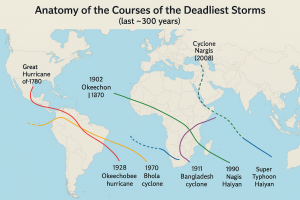
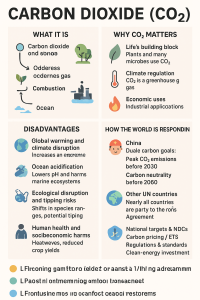
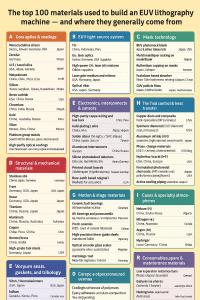
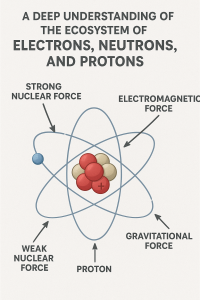
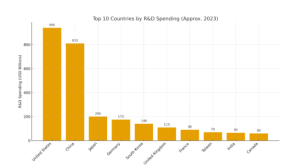
Be First to Comment